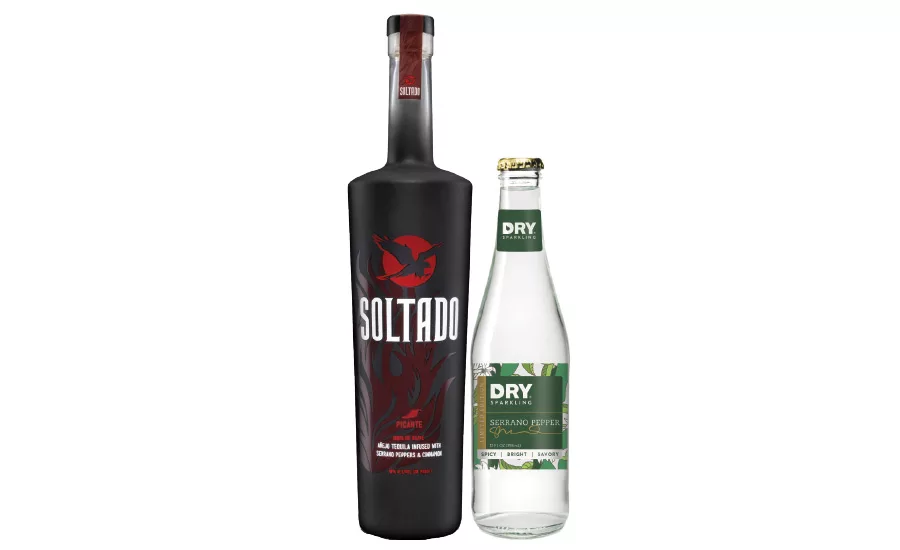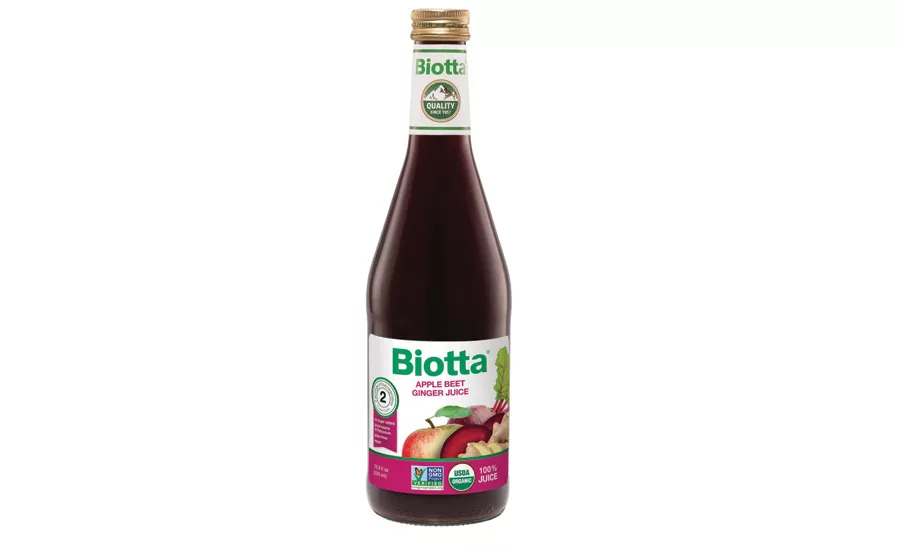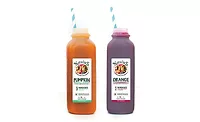Millennials, clean labels impact beverage flavor selection
Non-GMO, organic flavors in demand for beverage-makers



With a hand in many of the trends impacting consumer packaged goods, millennials have played a role in the growth of natural, organic and non-GMO products. In conjunction with the demand for better-for-you products, consumers are looking for flavors that are perceived to be healthier.
“The top macro-trends impacting beverage flavor are related to [a] generational shift in preference, mostly pertaining to millennials seeking out authenticity and healthy, natural flavors made with less sugar,” explains Nina Hughes-Likins, global marketing director at Prinova USA, Carol Stream, Ill. “Millennials also are fueling premiumization, which has a direct effect on producing more innovative flavors for high-end brands.”
Consumers also have made a practice of reading labels, making what’s on them more important. “As consumers, and in particular millennials, continue to read and understand labels, placing more value on clean labeling, organic certifications become more valuable to the brand owner,” says John Wilson, marketing manager at Allen Flavors, Edison, N.J.
Colleen Roberts, director of sales and marketing at Plainfield, N.J.-based Flavor Dynamics Inc., also notes the strong influence of millennials. “The millennials are a significant audience that has a greater demand for all-natural, non-GMO and sometimes organic ingredients,” she says.
The clean-label trend with natural and organic ingredients has driven beverage manufacturers to search for flavors featuring these characteristics. “Companies are requesting an increasing number of certified organic, non-GMO, natural and allergen-free flavors to meet specific product and labeling restrictions,” says Megan Trent, marketing representative at Gold Coast Ingredients (GCI), Commerce, Calif.
Dale Streit, director of flavor development at California Custom Fruits & Flavors (CCF&F), Irwindale, Calif., notes that GMO-free flavor requests are “increasing at a rapid pace.” But when it comes to organic options, some manufacturers can be deterred by the higher pricing of these ingredients.
“Organic flavor requests are still trending upward, but some customers, after inquiring about and sampling Organic-Certified flavors, are often disappointed with the higher cost in use of Certified-Organic flavors and decide to use more budget-friendly Organic-Compliant flavors instead,” he says.
Clean-label and natural trends have brought about a handful of flavor trends. “The macro trend of clean label cascades into a number of flavor preferences when it comes to beverage,” explains Jodi Horon, business development manager for beverage at Synergy Flavors, Wauconda, Ill. “Besides manufacturer and consumer interest in natural or organic flavors, more true-to-nature profiles are being sought after. Provenance claims like Guatemala guava or Florida orange remain in the marketplace as a nod to the flavor origin and also as a differentiator in the crowded beverage aisle.”
Al Murphy, vice president of sales at Mother Murphy’s Laboratories Inc., Greensboro, N.C., also notes the growth of regional claims. Additionally, he highlights that true-fruit flavors are trending. “Beverage companies are promoting true-to-fruit as a healthy alternative to the heavily added sugar-type beverage products,” he says.
Going further, GCI’s Trent notes that simplified, back-to-nature trends are impacting flavor selection. “Flavor trends have simplified to nature’s ‘healthier’ ingredients, such as honey, maple, domestic and exotic fruits, vegetables, nuts, coffee, teas and floral flavors. As the medicinal health trend continues to escalate, we have seen an increase in flavors with herbal and spice characteristics,” she says. “For example, turmeric is now valued for being a natural coloring agent, functional ingredient and a preferred spice flavor.”
Furthermore, Theresa Lancaster, marketing manager at McCormick Flavor Solutions, Hunt Valley, Md., notes the influence that culinary trends are having on flavor trends within beverages. “The use of culinary ingredients and techniques are appearing in everything from juices to alternative dairy milks, which create more complex and layered profiles,” she says. “Now, culinary profiles are inspiring all beverage types, leading to what we have titled ‘culinary-infused sips.’”
Functional flavors
Interest in more from-nature, clean-label products has grown in conjunction with the interest in value-added functional beverages, experts note.
“In the past year, we have seen an increasing number of innovative, functional health beverages. For example, there is a large supply of beverages containing probiotics, antioxidants, turmeric and natural caffeine,” GCI’s Trent says. “These beverages have supported the continuous increase in demand for organic, natural and allergen-free and non-GMO flavors to meet specific product labeling restrictions.”
Flavors that have health halos are gaining as a result of these trends, notes Kip Murphy, marketing manager for Virginia Dare, Brooklyn, N.Y. “The focus on health in the beverage category has never been higher,” he says. “Reduced sugar, antioxidants, even sleep and stress aid are becoming commonplace in the beverage category. Consumers want more from their beverages — especially health benefits. As a result, trends like all-natural flavors and flavors that have positive health associations (i.e., ginger, green tea, honey) are in demand.
“Better-for-you beverages are sticking with flavors that promote the better-for-you message,” he continues. “If the flavor doesn’t sound healthy, it could hurt sales. Most often, we see flavors like blueberry, honey and grapefruit. For more complexity, flavor combinations utilize multiple health halos to drive interest. Flavors like green tea pomegranate, ginger honey or even lemon acai will meet consumer expectation of better-for-you while providing an exciting flavor choice.”
Catering to the natural trends, from-nature flavors, like exotic fruits, vegetables, and herbs and spices, are gaining ground in the market, experts note.
“From ginger to grapefruit, flavors that are perceived to have an inherent health benefit are gaining traction in [better-for-you beverages],” says Nina Jacobson, market specialist for beverage at Kerry Group, Beloit, Wis.
Synergy’s Horon adds: “Another differentiation that we’ve noticed is pairing fruits with non-fruit flavors. Long gone are the days when strawberry kiwi was a unique combination, but instead of using other fruit flavors, brands are pairing them with botanical, floral, spice or even heat flavors.”
However, experts note that these functional formulations are not without challenges. As demand for organic products grows, beverage formulators are faced with creating new formulations.
“The demand continues to increase, and the manufacturers are scrambling to meet the needs for organic foods and beverages,” Prinova’s Hughes-Likins says. “Flavors have to be all natural, which can pose a challenge in formulation, especially when working with protein and other ingredients that require masking.”
Virginia Dare’s Kip Murphy also notes the challenges of formulating with natural ingredients. “As the shift to more ‘clean label’ continues, manufacturers need flavors that match consumers’ preferences,” he explains. “All-natural and organic flavor options are in high demand to fit the requirements necessary for healthy product claims.
“Functional beverages can pose flavoring challenges because of the active ingredients within them,” he continues. “Consumers want more from their beverages — probiotics, antioxidants, etc. Virginia Dare’s masking flavors allow our customers to neutralize offnotes caused by functional ingredients and let the characterizing flavor shine.”
Anne Vlahos, technical business development director for naturals at Kerry, adds: “When beverage formulators attempt to make a shift toward utilizing natural and organic flavors, spices or herb extracts in their products, they are often faced with the challenge of taste consistency. Natural flavors are derived from natural sources and are inherently less stable than an artificial alternative.”
Natural influence
Several of the trends that are affecting non-alcohol beverage categories also are playing a role in the flavoring of alcohol products. Virginia Dare’s Kip Murphy highlights the proliferation of natural flavors within the alcohol space. “Of course, citrus flavors are still common. Grapefruit-flavored beers and shandies are surging as we near the summer months as they can be quite refreshing,” he says. “Botanicals and even some vegetable flavors are trending within spirits. Lavender, rosemary, thyme and cucumber flavors are finding their way to store shelves.”
Flavor Dynamics’ Roberts echoes similar sentiments. “We have noticed in our ‘small craft’ alcohol beverage companies, a greater demand for Organic-Compliant flavor options for their new product lines. There is more interest in all-natural flavor profiles true to their identifying name,” she says.
Mother Murphy’s Al Murphy highlights that true-to-fruit flavors are playing well in the vodka segment, while oak flavors are becoming more prominent in the beer and spirits markets. “Oak flavors are being utilized more within the beer and spirits industry,” he says. “Smoke flavors, such as smoked chocolate and smoked cherry, are a flavor trend within the alcohol segment from the bartending side. I could see some of the smoke combination concepts translating to flavored whiskeys within the near future.”
Synergy Flavor’s Horon notes that confection and snow cone syrup flavors are resurfacing in the ready-to-drink alcohol beverage space, while more sophisticated flavors also are flourishing. “Contradictory to that trend is the interest in more sophisticated cocktail flavors. Aged profiles, smoky notes and nostalgic cocktails are still trending — especially since the cocktails premade for the consumer [are designed] to just open and drink.”
Ginger, caramel, pineapple, watermelon, passion fruit, coconut, coffee, peach, cinnamon, chocolate and chili peppers also are trending in the alcohol beverage segment, GCI’s Trent adds.
The proliferation of premium spirits also has placed an emphasis the use of more unique flavor profiles within the alcohol market, Prinova’s Hughes-Likins notes. “Premiumization is creating more innovative flavors in higher-end spirits,” she explains. “… Craft spirits are being infused with fruits and vegetables, with honey being used in both dark and light concoctions. Apple, grapefruit, mango and cucumber are top contenders in vodka, while cinnamon and honey comprise the flavored-whiskey segment.”
McCormick’s Lancaster also notes the influence of craft on flavor trends. “The impact of craft beer has also led to more artisan, culinary-inspired profiles throughout the beer and spirit categories,” she says.
Gabby Quintana, senior research chef and culinary mixologist at McCormick, adds: “Alternative sours have made a big impact on alcoholic beverages. Using traditionally culinary techniques like fermenting has opened up a new way for alcoholic beverages to be enjoyed that isn’t the traditional lemon or lime twang.”
CCF&F’s Streit notes that bitter herbal flavors could become more common within the spirits segment going forward.
“Many of the other recent trends in alcoholic beverages have reached their maturation stage, but one thing to look for in the future is ‘better-for-you’ merging with cocktail culture in the form of ‘elixirs.’ These may take on some aspects of the aperitivo and digestivi popular in parts of Italy with additional ‘good-for-you’ ingredients,” he says. “The aperitivo is said to aid in opening the palette, [and] the digestivi in aiding digestion. Ginger, citrus and other ingredients can be added for their health benefits. The bitter herbal ingredients popular in Europe may have to be toned down for the American palette, but the craft cocktail movement has familiarized many with the use of bitters in alcoholic drinks.”
Flavor forward
Experts highlight that two types of flavors — smoke and heat — are expected to make waves. “Smoke is one of the trendiest and fastest-growing flavors and has found a home across the full spectrum of alcoholic and non-alcohol beverage varieties,” Kerry’s Jacobson says. “According to Datassential, smoke has grown an amazing 125 percent since 2012 and makes appearances across multiple categories, such as soft drinks, beer, Champagne, wine, cocktails and premium coffee-blended drinks. Specificity is key as different types of wood, such as applewood, pecan wood and mesquite, are used to obtain a range of flavors. The future of smoke as a flavor enhancer will continue to evolve and move beyond simply ‘smoky’ or ‘ashy’ notes, but into particular varieties and flavor callouts such as ‘burnt,’ ‘charred,’ ‘applewood smoked’ and ‘white oak charcoal,’ to name a few.
“… In addition to smoke, we are seeing the presence of heat gaining traction over the past few years across all beverage categories,” she continues. “Heat in beverages has evolved from simply ‘hot’ or ‘spicy’ to complex flavor profiles that especially thrive in the world of cocktails. For example, according to Datassential, jalapeño has seen a four-year growth of 192 percent on beverage menus, ghost pepper a 400 percent increase, and sriracha’s four-year beverage menu growth is a whopping 2,498 percent. We are often seeing heat being blended with fruit or a sweet component, like watermelon habañero, which further blurs the lines between sweet and savory beverages.”
Allen Flavors’ Wilson also notes the continuing growth of hot flavors and highlights some additional flavors that play into this trend, including spicy cinnamon, nutmeg, cayenne, wasabi and curry, which also can be paired with fruit flavors.
For all beverages, alcohol or non-alcohol, embracing evolving taste trends benefits beverage brands, CCF&F’s Streit says. “Flavors are no different than other products, such as clothing or cars, etc. Styles and tastes change, yet they sometimes cycle back around,” he explains. “One flavor type may become obsolete to a younger generation, while another might become a ‘classic’ the way some older cars become valued classics.
“However, we are currently in a period of unusually rapid change in people’s food and beverage choices and habits,” he continues. “There are opportunities in the current changes, but those who do not quickly adapt to these changes will be at a competitive disadvantage.” BI
Looking for a reprint of this article?
From high-res PDFs to custom plaques, order your copy today!





